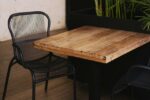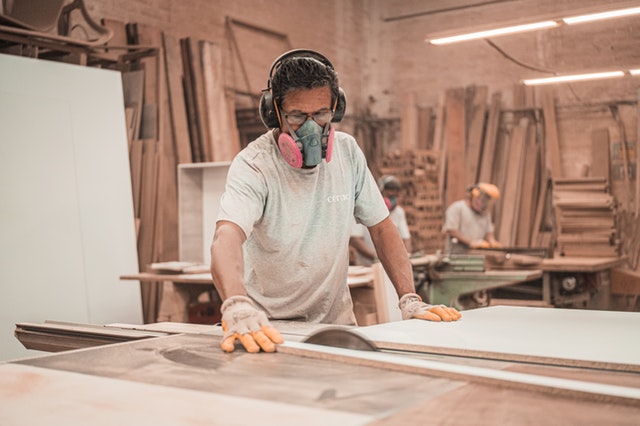How To Choose The Right Wood For Your Project

Choosing the right wood species is a crucial step in any woodworking project. The wood you choose will not only impact the appearance and aesthetic of your project but also its durability, strength, and workability. With so many different wood species available, it can be challenging to know which one is right for your project.
In this article, we’ll guide you how to choose the right wood for your project. We’ll cover everything you need to know, from understanding the characteristics of different wood species, to assessing their workability, stability, and cost.
Whether you’re building a piece of furniture or a small woodworking project, this guide will help you make an informed decision when it comes to selecting the right wood for your project. So, let’s dive into the world of wood and learn how to choose the perfect wood species for your next woodworking project!
I’m Gonna Need Some Wood
Ah, the classic phrase: I’m Gonna Need Some Wood. The words send shivers down the spine of a woodworker everywhere. There’s something so exciting about being able to pick out just the right type of lumber for a project that has the potential to bring joy to someone else’s life. Whether it’s a simple birdhouse or a magnificent bookshelf, the right type of wood is essential to creating something with lasting beauty.
Choosing the right wood can sometimes be overwhelming, especially if you’re new to the craft. It’s easy to get overwhelmed by the sheer variety of woods and the seemingly endless amount of information to learn about each type. But don’t worry! It’s really not that hard to decide which type of lumber is best for you. With a few simple tips, you’ll be able to confidently pick out the perfect wood for your next project.
First of all, don’t just grab the first piece of wood you see. We know it can be tempting to buy whatever is most convenient and economical, but trust us – you don’t want to regret it later. Take the extra time to look around and find a wood that has the ideal characteristics for your project.
You’ll also want to do some research ahead of time to understand the different types of wood and what purpose each one is best suited for. Do you need something hard and durable, like oak or cherry? Or perhaps something soft and lightweight, like pine or cedar? Knowing what purpose you need the wood to serve will help you make an informed decision.
Then, take a look at the prices of the different types of wood you’re considering. Different types of lumber have different price points, so you’ll want to make sure you get the most bang for your buck. Don’t automatically assume that the most expensive option is the best one; look at the specific characteristics of each type of wood and compare it to what you need.
Once you’ve narrowed down your options, it’s a good idea to get some sample pieces of each type of wood and get to know them better. Feel the wood, look at the coloring and grain, and see how it reacts to being worked. This will help give you a better idea of what each type of wood is like in it’s raw form, so you can make a more informed decision.
Then, when you’re ready to purchase the wood for your project, be sure to find out where it came from. Ask the store or lumber yard if they can certify that the wood is sustainably harvested and cruelty-free, if possible. This helps ensure that you’re choosing wood that’s been responsibly sourced, and will make you feel good about your work.
Finally, make sure you have the right tools for finishing. Different types of wood need different kinds of sealants and finishes to provide lasting protection, so do your homework and make sure you have the right products for the job.
So, don’t worry if the process of choosing the right wood for your project seems daunting. Just remember to do your research, compare prices, and get sample pieces of the wood. With these tips, you’ll be able to choose the perfect wood for your project!
Don’t Just Grab the First Piece You See
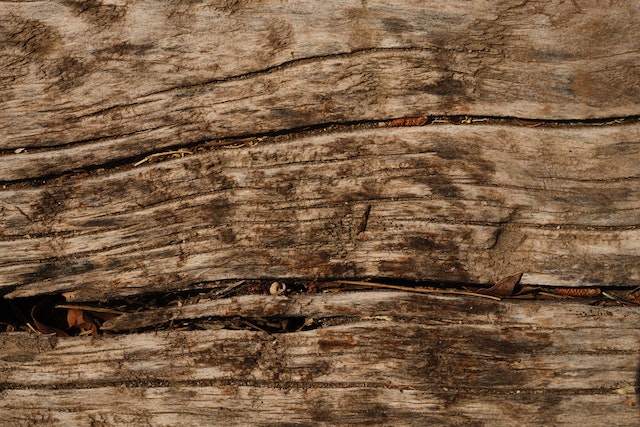
Ahoy matey! It looks like ye be ready to tackle that wood project, eh? Before ye take to thar saws and cuttin’ blades, I be wantin’ to impart some wise knowledge about thar selection of thar best wood for ye. When choosing thar right lumber for yer project, thou shalt not just be randomly pickin’ up pieces from down da docks.
No sir, that be a huge mistake. It be like stabbin’ ourselves in thar chest and hopin’ it not be fatal. Wood be thar foundation of any buildin’ project, matey, and ye need to be sure of its quality and durability. Aye, it thou be grabbin’ thar first piece that thou finds, it might end up costing ye double.
Now, don’t be thinkin’ grabbin’ thar first piece be the only blunder ye can make. Thou shalt also be mindful of the wood species. Best ye research the types and grades of wood that thou shalt need. Different species of wood have different qualities and be important for the end result of yer project. Damages be another factor thou should consider. Yer wood needs to be free of splits, cracks, and knots. Take thar time and do thar due diligence to ensure thou be using the highest quality of wood for yer project.
Size be another factor to consider. It be important to buy the right size of lumber for thar project. Look at thar dimensions of the boards — thickness, width, and length. Ye can find thar appropriate board size for yer project by using thar plans.
Aye, finally, spare no time to inspect thar wood. Having a good look at thar wood before buyin’ it be extremely important. Check thar wood for weather and wood aging issues. Ye wouldn’t want yer hard work and money to go down thar drain by buyin’ wood that won’t last thar test of time.
So, if ye ever find yerself eyein’ a pile of rough wood, remember, don’t be grabbin’ thar first piece ye see. There be more at stake here than just looks. Make thar wise choice and research, inspect, and measure all thar wood to ensure ye be gettin’ the best quality for yer project. By doin’ thar due diligence, ye can make sure that ye be gettin’ the most value out of yer money.
Doing Your Research
When it comes to taking on a woodworking project, no matter the size, there’s one thing you should never skimp on—research.
Ah, research. With all the expectations and pressures of woodworking, who’d believe it—research! That’s right, I said it. Before you think about taking out your saw and plunging right in, you’ll need to do some research first.
Now, don’t fret. Research doesn’t have to be boring. It just requires a bit of creativity and a little dedication. To start, you’ll need to read up on some of the different types of wood and what they’re best used for. This can be done through a variety of sources, including print and digital. From there, take a look at what professionals and even hobbyists have to offer in their own personal experiences. Read through their reviews and see what success and failure stories have been shared with you. All this information can come in handy as you plan out your woodworking project.
Next, it’s time to get a bit more hands-on with your research. Go and visit some of your favorite woodworking stores and get a better feel for the types of wood they offer. Ask a few questions, too, like what type of wood they recommend for a certain type of project. If a store doesn’t have the wood you’re looking for, you can even shop around online and check out more options.
Finally, for those looking for some extra help, you can even find woodworking consultants that can help you select the right wood for your project. They’ll consider your budget, intended use, and even the climate you’re in to provide the best advice and guidance.
Now, if you’ve followed all these steps, you should be well on your way to finding the best wood for your next woodworking project. Research may be a pain, but with the right knowledge and skills, you’ll be ready to take on that woodworking project without fail.
Know Your Intended Use

When it comes to choosing the right type of wood for your project, the most important factor to consider is the intended use. There is no one-size-fits-all answer when it comes to selecting the perfect wood for your project. Depending on what you’re planning to do, you’ll need to carefully consider the type of wood that makes the most sense for your project.
Here’s the funny part: when it comes to selecting the right wood, you may actually not even NEED wood. For example, when creating a small shelving unit, metal or plastic may be a better choice than traditional lumber.
Regardless of the material you use, you’ll want to make sure it fits your intended purpose. Are you building something that will be exposed to the elements? Or is your project purely decorative? Will it be subjected to a lot of wear and tear?
These are all considerations you need to factor in when choosing the right wood. Think about the environment you’ll be putting your finished piece in, and what kind of use it will be put through. That’s the best way to ensure that you choose the wood that’s best for your project.
But you don’t have to be a woodworking expert to get it right. For example, let’s say you’re planning to build a kitchen table. Well, maple and oak are both great choices for wood furniture, but there are other factors to consider. Will it be exposed to liquids? Will it receive a lot of heavy use? Your answers to these questions will determine the best, most durable wood for your table.
It’s also a good idea to take into account the aesthetic side of your project. If you want your piece to look its best, you may want to opt for a more exotic or end-grain wood. But if price is a factor, then look for a cheaper, lower-grade wood like pine or walnut.
At the end of the day, the best way to choose the right wood for your project is to invest some time in research, and know what to look for. Careful consideration of your project’s needs and available options, along with some savvy shopping, will ensure that your project is built to last.
Take a Look at Price
When it comes to selecting the right wood for your project, the price point can be a factor. While sometimes it’s best to go with the higher quality and more expensive type of wood, it’s best to do your research first. After all, there’s no telling what kind of wood you’ll end up needing.
Let’s face it – wood isn’t always cheap. And if you don’t have the right budget, you’ll be left with the cheaper, lower quality wood. But that doesn’t mean you can’t find something within your means. You just have to weigh out which type of wood is an ideal balance between quality and cost.
When bargaining for wood, you might find yourself browsing through a woodworker’s store. Now, I’ve been to my fair share of wood stores, and if there’s one thing I can tell you, it’s that you’ll definitely find what you’re looking for. From exotic woods all the way to the most common varieties, from bamboo to sandalwood, there’s no shortage of options.
But beware – sometimes the prices can get high. If your budget is a bit tight, you may want to assess the market with a trusted expert. See what kind of prices they give you – or try to bargain. You might be able to get a better deal than you’d expect.
You can also take a look online to compare wood prices. Most retailers list their inventory with prices attached. Even if you don’t have the exact measurements of what you need, you’ll still be able to get the general idea of the cost.
And finally, don’t be afraid to be a little creative. If you can spend a bit of extra time and effort, you can probably find a pocket of cheaper yet quality wood in a nearby lumber yard. You just have to do a little bit of looking around.
So don’t be too shy about taking a look at price – it’s part of the process of finding the right wood for your project. Doing your research, knowing your intended use, and getting some samples are all part of the process of determining what wood is best. So don’t give up hope – if you know the right place to look and have the courage to bargain, you can get the kind of wood you need without breaking the bank.
Get Some Samples
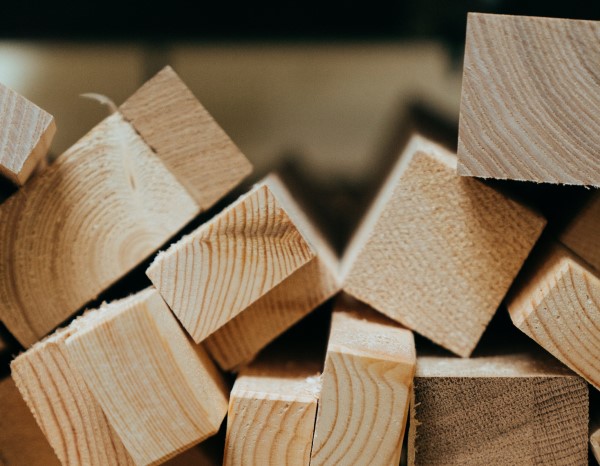
Ah, sample time – shopping without the commitment! Just like trying to a new restaurant, you don’t want to just dive right in and commit to something you’re not sure if you’ll like. That’s why, if you’re a newbie to woodworking, you should always get some samples and try them out before you invest in a larger piece.
Now, don’t just grab a chunk of wood, tie it around your waist and call yourself a lumberjack! Instead, find a reputable woodworking shop and look at their selection. You can even ask questions – what type of wood would be best for your particular use?
Oh, and there are so many types of wood available. There’s oak and walnut, cherry and pine…the list goes on and on. If you’re really just starting out, it may be best to stick to a softwood like pine, or a hardwood like oak. These woods are very common and widely available, so you can find them easily.
Now, if you do end up buying samples, find an inconspicuous spot on the piece of wood and tap it with a small hammer. This will help you understand the structure of the wood, especially if it’s a harder type like walnut or cherry. You’ll also be able to feel the grain.
Once you’re finished with the sample, you can compare its physical properties with the other options you’ve gathered. Also, you can test different types of finishes on the sample – is the finish too glossy or too matte? Did the stain take well to the wood? Getting samples is a great way to experiment and make sure you’re getting exactly what you need.
Ah samples…just like testing a new dish in the restaurant. If you’re not sure what kind of wood you need for your project, don’t forget to get some samples first! You won’t regret it – and neither will your project.
Finding the Source
When it comes to finding the right wood for your project, don’t just grab the first piece you see on the shelf – you need to do a bit of research first! Finding the right source can be tricky, so I’m here to help.
If you’re looking for specific types of wood, like plywood or particleboard, then you can find reputable sources from big box stores or lumberyards. You may be able to find what you need without having to order it from an online source.
You can also check out specialty woodworking stores. These stores tend to specialize in different types of wood, so if you want a more unique piece you can always find something there. They may also have a higher quality product than you can find elsewhere.
If you can’t find the right material at a local store, then you can always shop online. There are lots of sites that specialize in woodworking, and you can usually find better prices and better quality products by shopping around. Just make sure you’re getting from a reputable source, as you don’t want to end up with a defective or otherwise inferior product.
Another great source for wood is your local sawmill. If you live in a rural area, chances are there are sawmills nearby. By getting your wood from the sawmill, you can get a superior product for a fraction of the price. Plus, you’ll get the satisfaction of knowing that you’re helping to support a local business.
No matter what type of wood you’re looking for, make sure you do your research and find the right source. By taking the time to find the right source, you can get the perfect material for your project, at a price that fits your budget.
Get the Right Tools for Finishing
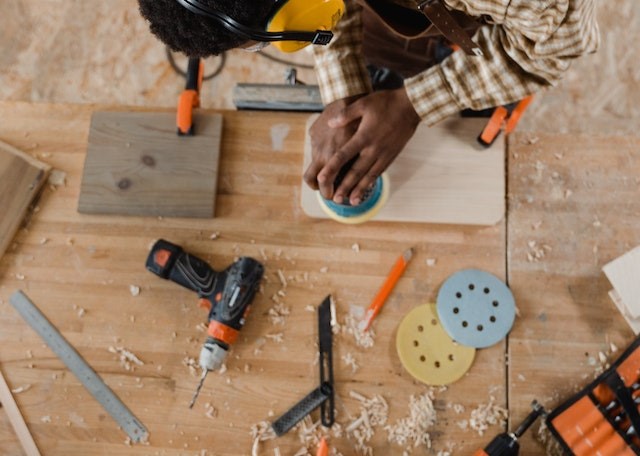
When it comes to tools for finishing, it can be tempting to just grab any tool you see in the hardware store and hope for the best. But it’s essential to ensure you’re using the right tools for the job – otherwise, your finished project won’t look as good as you’d like.
Let’s start with sanding. Sanding helps remove imperfections in the wood, creating a smooth finish. You should always use the right grade of sandpaper for the job. For instance, if you’re working with softwoods like pine, start with a very fine grit sandpaper, like 150 grit, which will give you a nice, smooth finish. For harder woods, like oak or mahogany, start with a coarser grit, such as 60 grit, as that will help remove more material quickly.
Once you’re done sanding, it’s time to apply a finish. Generally, if you’re looking for a top-quality result, you’ll want to use a brush. Brushes will allow you to evenly spread the finish and get into small crevices that may be difficult to reach with a rag. Additionally, when painting, brushes allow for more precise brushstrokes, which can help bring out the detail in a project.
Another tool you may want to consider for woodworking is a router. Routers can help shape wood into different shapes and sizes with precision, which can be invaluable when creating intricate pieces. They can also help in making many repetitive cuts, such as creating multiple identical grooves or dados.
Finally, no matter what type of finish you’re applying, you’ll need some type of applicator. While a rag will work in a pinch, it is essential to select the right type of applicator for the job. Generally, if you’re using an oil-based finish, such as boiled linseed oil, you’ll want to use either a natural bristle brush or a Foam Brush. For water-based finishes, such as paint, you should use either a synthetic bristle brush or even a high-quality foam brush, depending on the job.
Choosing the right wood for your project is only part of the process – it’s just as important to make sure you have the right tools for the job. Doing so will ensure your finished project looks its very best.
Making the Right Choice
Making the right choice can be a stressful situation for some. You want to make sure you have all the knowledge and resources to make the decision that’s best for your project. After all, it’s going to take time, energy, and money to make something come to life. Luckily, with a little bit of prep, you can be sure you make the right choice!
First, it’s important to know your budget. Making the right choice means having a realistic view of the costs associated with the wood selection. Know your price range and stick to it. There’s nothing worse than falling in love with a piece of wood that you can’t afford.
Second, it’s important to measure twice and cut once. It’s an old-school adage, but it applies when choosing wood. Take your time to get the dimensions right. Not to mention, a tape measure is much cheaper than a planer.
Once you’ve chosen your wood, it’s time to make sure you have all the right tools. You don’t want to get to the job and realize you’re missing something important. Make sure to have chisels, saws, hammers, drills, and other necessary tools before you get started.
Finally, take the time to really get to know the grain. Stains and colors can be deceiving, and it’s important to understand the nature of the wood underneath. Feel the wood, get to know what it will feel and look like when finished.
Making the right choice can seem daunting, but with these tips, you can be sure you make decisions that you’ll be happy with. And if you’re still stumped, don’t be afraid to ask the experts. That’s what they’re there for. Once you have the right wood, the rest will come easy! Now get out there and start making something awesome!




